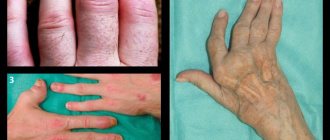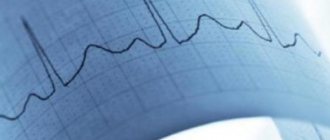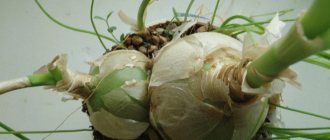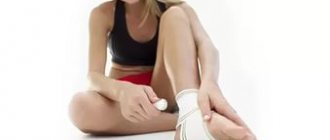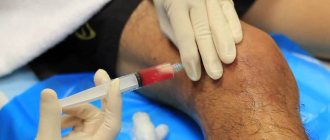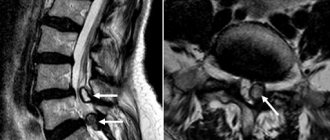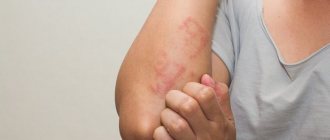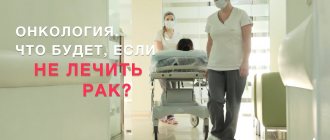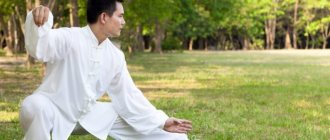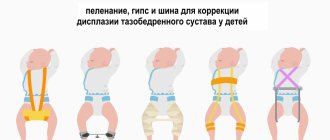Cryotherapy is a relatively new method that is actively used in dermatology and cosmetology. Recently, cold treatment has begun to be recommended for those who have been diagnosed with arthrosis, arthritis, osteochondrosis, intervertebral hernias and radiculitis. How effective is the treatment of arthrosis or osteoarthritis with this method?
Cryotherapy has been used in Russia since 1998
Areas of application of cryotherapy
- Surgery: treatment of burns and incised wounds, erysipelas, bedsores and ulcers.
- Neurology: therapy of migraines, spastic hemiparesis, paraparesis, acute vertebrogenic pain syndrome, multiple sclerosis.
- Traumatology, orthopedics: therapy of tendons, ligaments, contractures, pathologies of soft and bone tissues, joints.
- Rheumatology: treatment of arthrosis, rheumatism, arthritis.
- Cosmetology, dermatology: treatment of skin diseases, scars, pigmentation, etc.
Due to its effectiveness (increasing elasticity and skin tone), cryotherapy remains the most popular procedure in cosmetology.
What effect does liquid nitrogen have on joints?
Liquid nitrogen (one of the cryotherapy options), acting locally on the damaged joint, relieves pain, reduces swelling and increases mobility. After several procedures, the trophism of cartilage and bone tissue improves, blood circulation increases, and regenerative processes are activated. Patients report less intensity of muscle spasms and contractures, so they can reduce the dose of essential medications.
Local cryotherapy brings relief after 1-2 procedures
Types of cold treatment
There are two types of cryotherapy: general and local.
The general procedure is carried out for 3 minutes in a cryochamber, where the surface of the skin is cooled to 0 0C with a mixture of carbon dioxide and nitrogen -100... -140 0C. Thus exposed to temperature stress, the body triggers a “mechanism” to stimulate protective functions and metabolic processes. The skin is not damaged.
Local cryotherapy involves cooling a small area of skin immersed in a gas environment with a temperature of -110... -160 0C. It is recommended to carry out the procedure by warming your hands and feet with woolen mittens and socks to avoid frostbite of the limbs and respiratory organs and using a cotton-gauze bandage.
There are non-hardware and hardware local cryotherapy. When performing non-hardware cryotherapy
synthetic cryopacks or ice are used. These refrigerants have different temperatures: ice - from -10 to -7 0C, cryopacks - up to -20 0C. In this regard, the time for massage or applications with ice cubes and cryopaks is different: 30 and 10-20 minutes, respectively. Cryopacks are applied through a napkin due to their critically low temperature.
Hardware cryotherapy
is carried out using special installations through which a stream of cooling gas or dried cold air is supplied to a certain area of the skin surface. Their temperature (up to -180 0C) is extreme for the body, so the time of such temperature effects is equal to several seconds.
What is the effect of joint cryotherapy based on?
When exposed to ultra-low temperatures, local cooling of tissue occurs within the limits of cryo-resistance, i.e. up to 5-10 0С. at the same time, a pronounced shift in thermoregulation of the whole organism does not occur. If the tissue is cooled below the cryostability threshold, this will lead to its destruction, because water crystallizes inside the cells. This effect is the basis for the use of cryotherapy in the treatment of benign and some malignant neoplasms.
So, under the influence of low temperatures, a spasm of peripheral blood vessels occurs, followed by their relaxation and expansion. Moreover, the process involves not only those vessels that constantly take part in blood circulation, but also reserve capillaries. Due to this, the following effects are observed:
- Increased blood circulation.
- Normalization of the immune response.
- Analgesia, i.e. analgesic effect.
- The severity of inflammatory reactions is reduced.
- Muscle spasm is relieved.
- The elasticity of ligaments and muscles improves.
Hardware air cryotherapy (VAC) at GUTA CLINIC
VCT in our clinic is performed using the CryoJet S600 unit (Germany), which supplies any part of the body with an adjustable air stream, dried and cooled to a temperature of –60… –30 0C.
The use of CryoJet S600, a cryotherapeutic system of the latest generation, in local VCT provides the following therapeutic effects:
- inflammation is relieved;
- spasms and pain are eliminated;
- muscle tone is regulated;
- metabolism is activated;
- microcirculation is restored;
- cellular and humoral immunity is activated.
How many sessions will be required?
During cryotherapy, cooled air is supplied to skin areas at a volumetric flow rate of 350 to 1550 l/min. The air supply is provided by nozzles of various sizes, which are located at a distance of several centimeters from the skin.
- The duration of a cryotherapy session is from 2 to 15 minutes.
- A course of cryotherapy includes from 5 to 15 sessions.
- In some cases, you can get by with 1-2 sessions.
Cold exposure is not accompanied by painful sensations, except for a slight burning or tingling sensation.
Advantages of hardware VKT
Carrying out VCT has undeniable advantages over other methods of cryotherapy:
- Environmental friendliness (ordinary atmospheric air acts as a cooling medium).
- Safety (short-term exposure to cold eliminates the threat of frostbite and complications).
- Versatility (wide range of therapeutic applications: rheumatology, neurology, orthopedics, surgery, dermatology, cosmetology, sports medicine).
- There is no need for preliminary preparation for the procedure and subsequent rehabilitation.
Indications
- degenerative-dystrophic and inflammatory lesions of large and small joints (arthrosis, psoriatic, rheumatoid, gouty and other arthritis)
- inflammation of ligaments, tendons, as well as their membranes (ligamentitis and tendovaginitis)
- plantar fasciitis; heel spur"
- enthesopathies at the sites of attachment of tendons and ligaments to bones (epicondylitis, styloiditis, etc.)
- osteocondritis of the spine
- inflammatory skin diseases
- skin changes (cellulite)
Contraindications for VCT
- General contraindications to physiotherapy.
- Raynaud's disease.
- Obliterating endarteritis.
- Sickle cell anemia.
- Hypersensitivity to cold.
Research into the effects of low-temperature cold on the body will always continue, so don’t wait for scientists to make a grand discovery on this topic and offer a new method of cold treatment. If you have no contraindications to cryotherapy, nothing prevents you from using this procedure now and making sure of its effectiveness.
What is cryotherapy
Cold therapy was invented in Japan in the late 1970s. Doctors found that after such exposure, pain in patients with rheumatoid arthritis decreased for several hours. Further experiments showed that in a number of cases, using the method, it is possible to achieve other results that are no less effective than medication:
- blood circulation increases;
- microcirculation in tissues is restored;
- muscles and ligaments acquire lost elasticity;
- metabolism improves;
- immunity increases;
- Cold has a restorative effect on the body.
Liquid nitrogen vapor locally creates a temperature difference, as a result of which the vessels sharply narrow and then immediately expand. This enhances metabolism and helps mobilize the body's defenses.
Cryotherapy is aimed at overall health of the body
The essence of the procedure
To get a positive effect, you need to apply refrigerant to the damaged part of the body. But first you need to consult a doctor, because he is the one who decides how cool the nitrogen should be. Different parts of the body have different temperatures.
When the joint is very cold, standard reactions can be observed:
● blood vessels narrow, the speed of blood flow in the treated area decreases;
● the heart rate increases slightly;
● blood pressure increases;
● adrenaline and norepinephrine are released.
Thanks to all these processes, a large amount of blood, which is saturated with nutrients, flows to the damaged diseased joints. Tissues are saturated with oxygen, microcirculation is stimulated. When the second phase of nitrogen exposure begins, the body tries to compensate for temporary hypothermia. Body temperature rises slightly, the process of tissue and cell restoration accelerates. Over the entire cycle of the procedure, pain in the body is not simply reduced. He is tempered and mobilized to restore health.
Treatment of joints with nitrogen gives visible results that cannot be obtained with medications. However, therapy is often used in combination and supplemented with certain medications and special health-improving exercises.
Doctors recommend cryotherapy for joints for several diagnoses:
● arthritis;
● arthrosis;
● osteochondrosis;
● radiculitis;
● muscle spasms;
● myalgia.
However, there are also contraindications that prevent you from attending a cryotherapy session for knee or other joints. You will have to wait if you have one of these diseases:
● serious damage, wounds on the area of skin that will be treated;
● thrombophlebitis;
● blood diseases;
● diseases of the cardiovascular system;
● colds and ARVI.
Physiotherapy Cryotherapy
The essence of cryogenic therapy (known among patients as a “ cryosauna ”) is that a person is immersed neck-deep for a short time (2-3 minutes) in a layer of gas cooled to a temperature of -130 ° -160 C.
The temperature and time of the procedure are selected taking into account the characteristics of the skin of the human body, so during the procedure only a thin surface layer in which thermal receptors are located has time to cool down, and the body itself does not have time to experience noticeable hypothermia. Moreover, thanks to the special properties of cold gas, the procedure is quite comfortable; the feeling of cold is unexpectedly pleasant, especially in the summer.
Those who have experienced cryotherapy willingly repeat these procedures, even despite the relatively high cost. The reason for the popularity of cryotherapy among patients is that the effect on the skin's cold receptors causes a powerful release of endorphins in the body.
The maximum clinical effect of cryotherapy occurs directly in the skin and is most firmly fixed at the tissue level. Therefore, the use of aerocrotherapy (ACT) in dermatology has a wide nosological palette: from the treatment of acute and chronic inflammatory processes to the rehabilitation of secondary degenerative manifestations of skin diseases. A rational combination of classical therapy with ACT makes it possible, in almost all cases, to achieve either significant improvement or clinical recovery and prolongation of remission in chronic skin diseases.
For example, the use of ACT for acute inflammatory exudative processes on the skin quickly relieves acute phenomena, which makes it possible to completely abandon traditional local therapy (lotions, sprays, etc.)
In dermatology, aerotherapy is used for autoimmune and granulomatous processes in skin diseases such as psoriasis, neurodermatitis, eczema, erythematosis. seborrhea, scleroderma, lichen planus, etc.
It should be understood that ACT is used not only to treat skin manifestations of the disease, but is mainly aimed at homeostasis modulation and therefore changes the nature of the course of the disease.
After the procedure, patients experience a persistent inhibition of the immune response, tissue infiltration decreases, along with the activation of proliferation and reparative regeneration.
Aerocryotherapy promotes:
- pain relief;
- reducing inflammatory edema and eliminating muscle spasm.
The method is used in the acute period of arthritis with severe pain.
Cryotherapy (krios - cold, therapy - treatment) is a section of physiotherapy that includes a method of treatment with ultra-low temperatures (cold treatment).
Cryosauna is the latest equipment for healing effects on the entire body.
The use of cold for medicinal purposes has been known since antiquity, and mention of the healing effects of low temperatures, in particular, analgesic and anti-inflammatory effects, can be found in the works of Hippocrates and Avicenna. The traditions of cold therapy found their continuation and development in subsequent eras of the development of medicine (Celsius, Galen, Virchow, Samoilovich, Pirogov, etc.).
Scientific developments in aerocryotherapy began in Japan about 50 years ago. And priority in the field of cold treatment belongs to the Japanese rheumatologist Tashimo Yamauchi, who in 1981 substantiated the use of cryotherapy in the treatment of patients with rheumatoid arthritis. When treating such patients with cold, pain in the joints decreased and their mobility was restored.
Research in recent years has shown the high therapeutic potential of extremely low temperatures. The principle of cooling the body with air-gas environments of extremely low temperatures underlies a new method of cold treatment - aerocryotherapy.
The procedure can be carried out in special equipment – a cryosauna. The cryosauna is similar in appearance to a vertical solarium in which a person is exposed to low temperatures for several minutes in clouds of liquid nitrogen. During the procedure, the temperature in the cryosauna is minus 110 – minus 180 degrees.
The procedure in the cryosauna is pleasant and comfortable, the temperature and time of the procedure are selected taking into account the structural features of the skin of the human body, so in 2-3 minutes only the thin surface layer of the skin, in which the thermal receptors are located, has time to cool down to zero degrees. The procedure is effective only if the temperature on the surface of the human body drops below zero degrees, i.e. the procedure cannot be less than 2 minutes. Nerve receptors send signals to the brain that activate regulatory centers: along a reflex arc, nerve impulses pass to the brain, and from there to the diseased organ, triggering recovery processes.
Those. cryosauna has a general activating effect on the body:
- stimulates the immune and endocrine systems;
- has analgesic, anti-inflammatory, decongestant and antispasmodic effects;
- promotes saturation of the blood with active biological components - endorphins.
By activating all regulatory systems, the body restores the ability to independently “audit” existing violations and eliminate them.
Cryotherapy is used:
- for the treatment of skin diseases (good results even with psoriasis, eczema, neurodermatitis);
- for the treatment of diseases of the musculoskeletal system (arthritis, osteochondrosis, etc.);
- in gastroenterology (pancreatitis, peptic ulcer, colitis);
- for respiratory diseases (pneumonia, bronchitis, bronchial asthma);
- the psycho-emotional state improves: manifestations of neuroses go away, irritability goes away, sleep improves, performance, vitality and mood increase.
If you are prone to slight hypertension or hypotension, the pressure will stabilize at normal values after several procedures. Cryosauna is indicated for the treatment of menopause in women and increases potency in men, and has a positive effect on the sexual sphere.
Particularly noteworthy is the fact that cravings for alcohol decrease during the course of cryotherapy. Also valuable is the experience of using cryotherapy to relieve withdrawal symptoms in people suffering from opiate addiction, with minimal or no medical support. A surge in the concentration of endorphins displaces opiates introduced from the outside, thereby “washing” opiate receptors, which normalizes their functioning. Similar results were obtained in the case of abstinence in alcoholics. In addition, the dose of painkillers and sedatives taken is reduced.
Since cryotherapy has a pronounced analgesic, anti-inflammatory and keloid-protective effect, improves microcirculation in tissues, its use in the treatment of trophic ulcers and long-lasting wounds (including burns) is quite effective. In a gentle mode, cryotherapy is also used for moderately severe varicose veins.
Cryotherapy is effective in the treatment of chronic inflammatory gynecological diseases and menopause. There are known cases of curing infertility due to the beneficial effect through the central nervous system on the hypothalamic-pituitary system, which leads to the normalization of hormonal levels and synchronizes biorhythms in a woman’s body.
Cryotherapy (cold treatment) has a pronounced immunomodulatory effect and increases the body's resistance to colds. Patients who have undergone a course of cryotherapy note that in winter they either did not suffer from ARVI at all, or suffered from them easily and quickly.
In sports medicine, cryosauna is used in the treatment and rehabilitation of acute and chronic sports injuries, maintaining the peak of an athlete’s athletic form, preparing and optimizing the functional state of athletes immediately before competitions, and rehabilitating athletes after competitions in order to prolong their sports life.
Cryosauna has a beneficial effect on the skin (its condition improves - it becomes soft and velvety). Rejuvenation occurs due to improved microcirculation, optimization of metabolic processes, and increased skin turgor. Cryotherapy is used in the treatment of acne, rosacea, including those complicated by demodicosis, dry and oily seborrhea.
Cryosauna is effective in correcting cellulite and excess weight. The procedure forces the body to expend a large amount of energy and within a few days about a kilogram of weight is lost. After losing weight, the skin does not sag, but remains elastic. Metabolism is normalized due to irritation of a huge receptor field, activation of the hypothalamic-pituitary system with the subsequent involvement of other regulatory and executive systems of the body.
